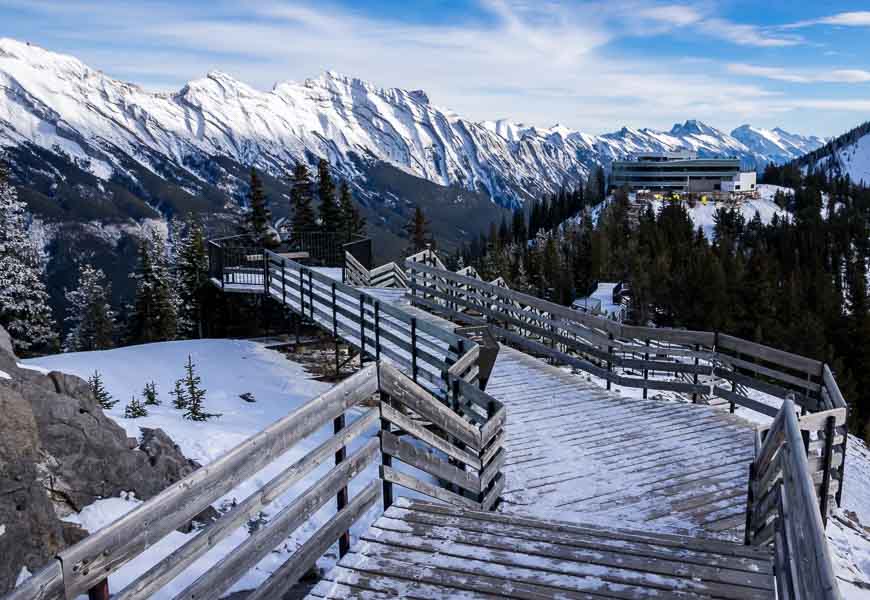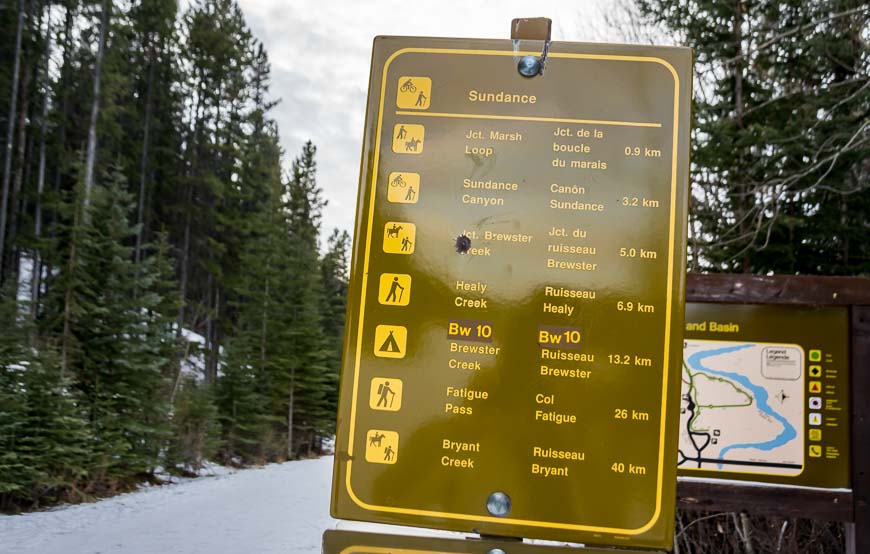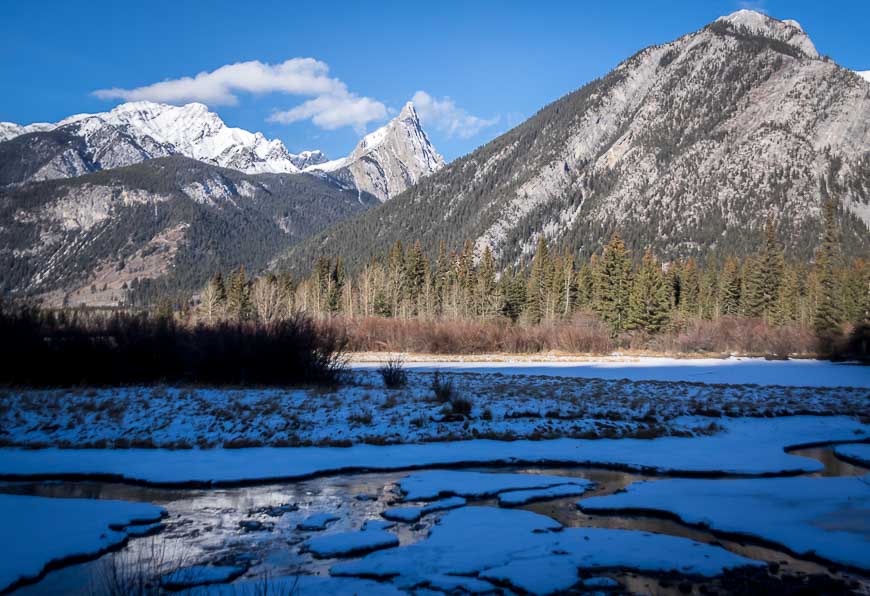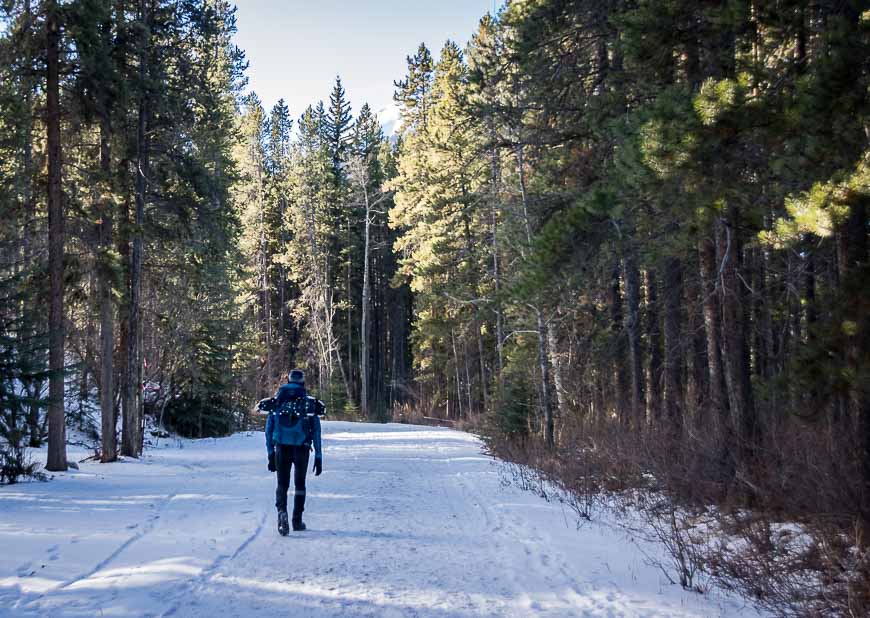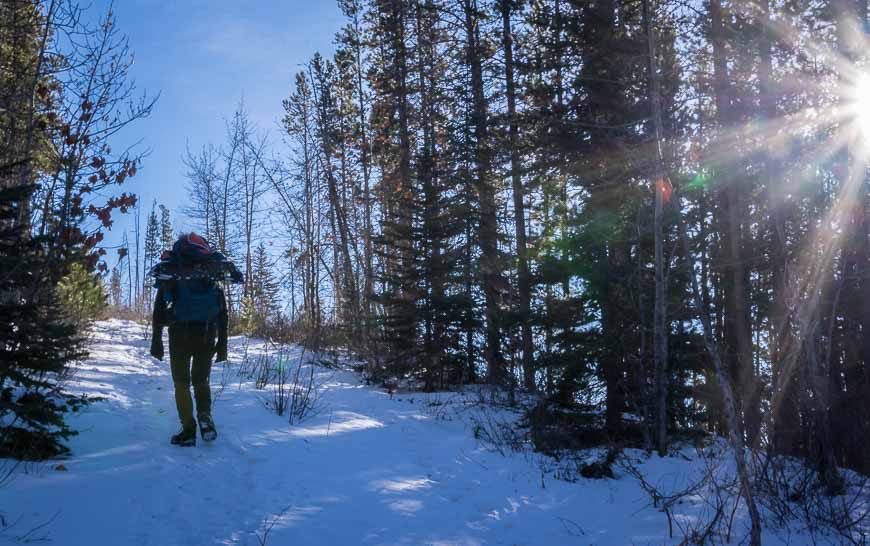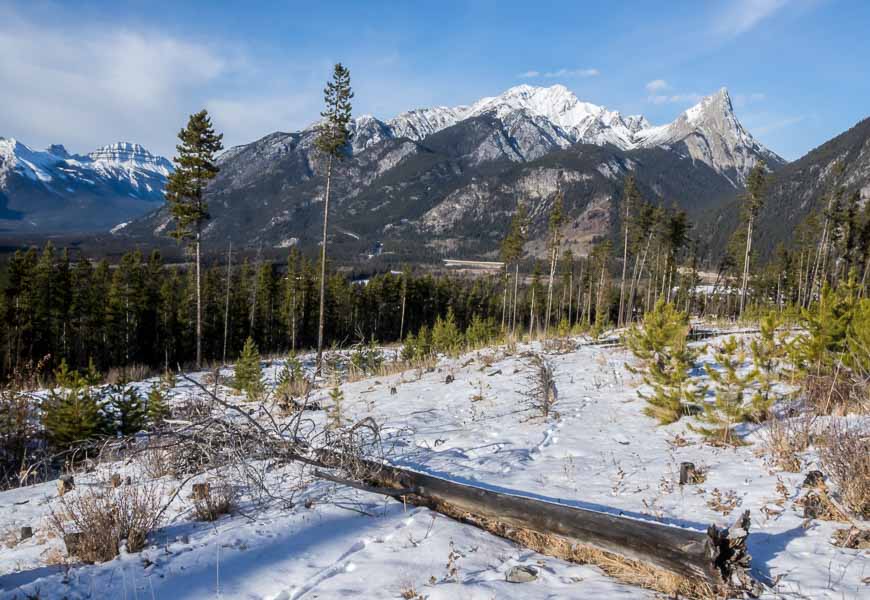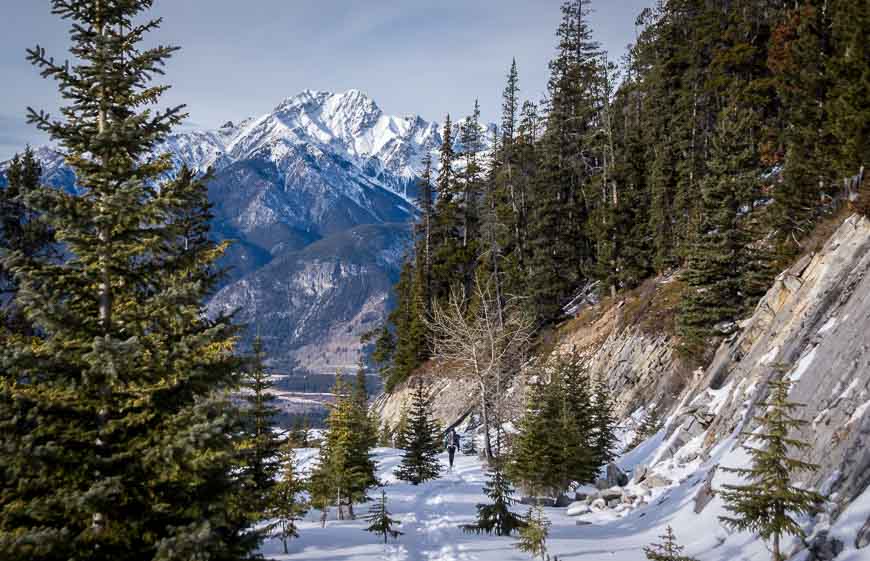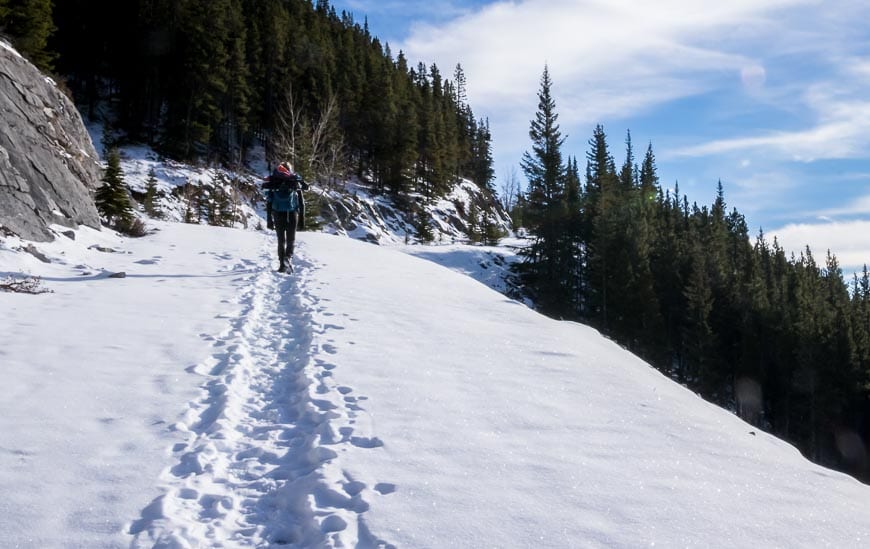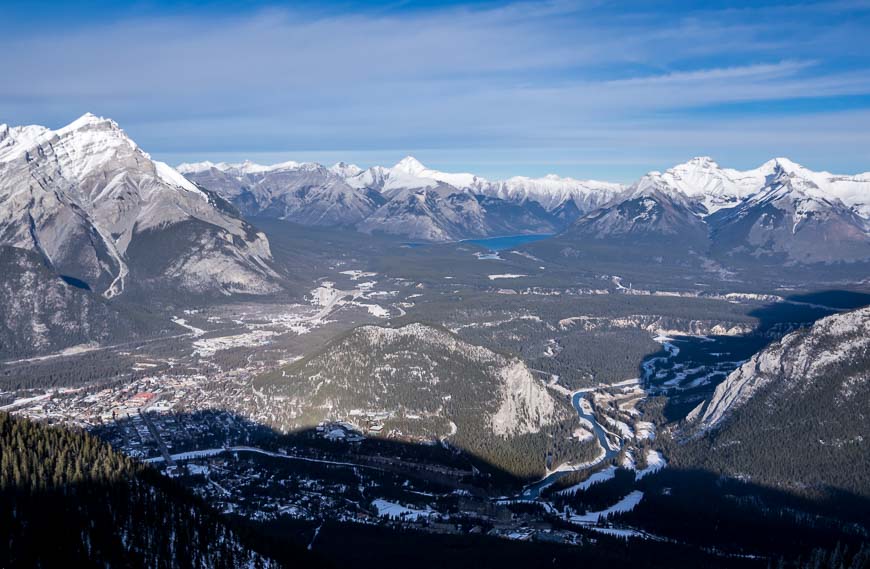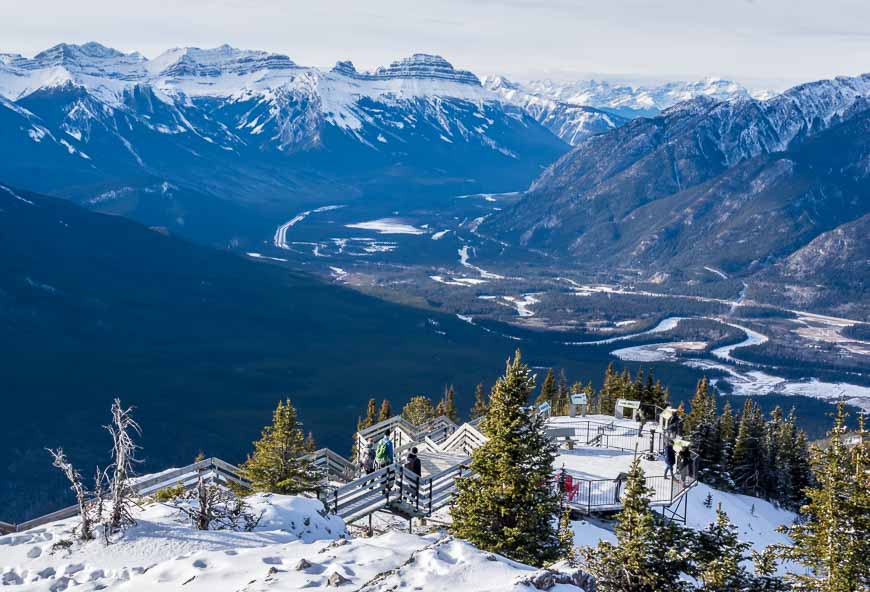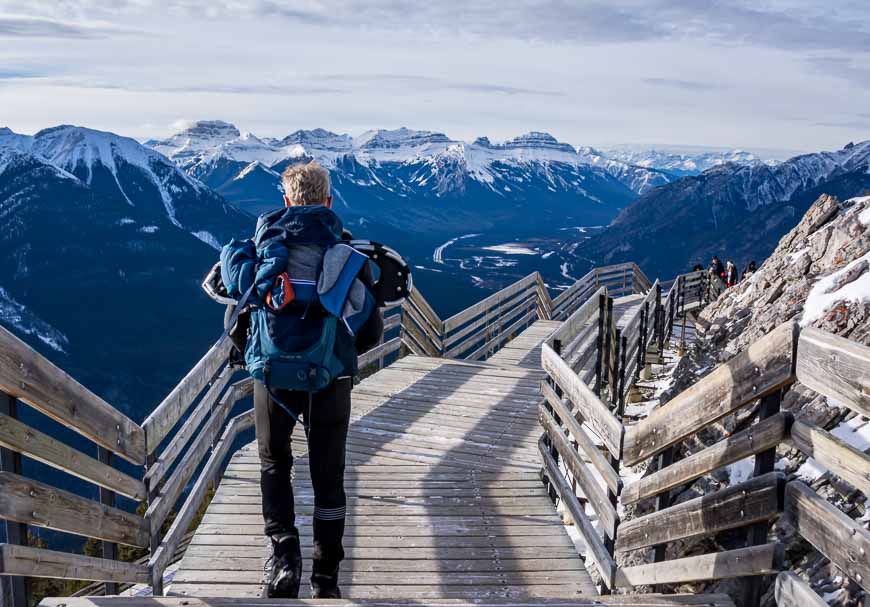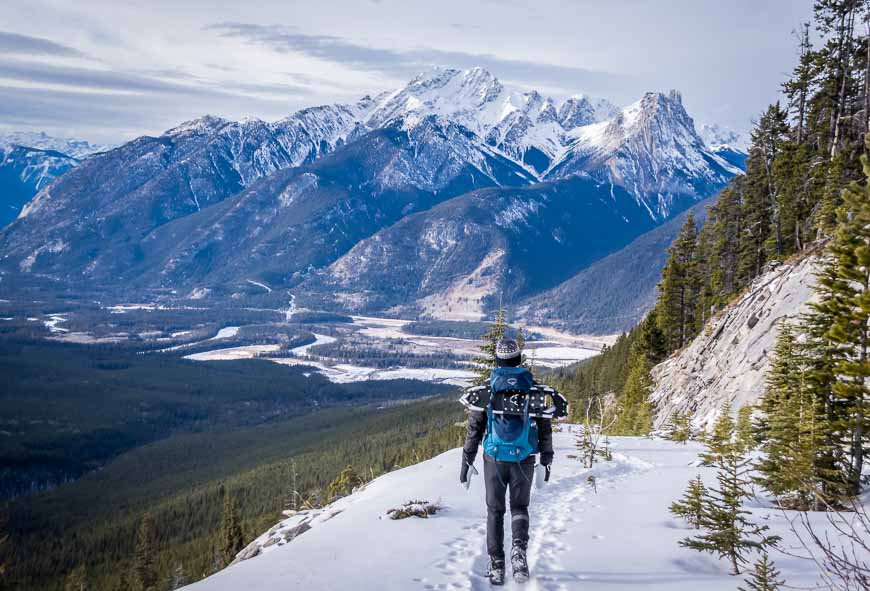Sulphur Mountain in Banff National Park, named for the sulphur odour emanating from the hot springs near the base of the mountain, is usually accessed via a quick and scenic ride on the Banff Gondola. That’s the easy way to get up and down the mountain. But there are two other options. Do the Sulphur Mountain hike beneath the Banff Gondola, descend the Cosmic Ray Road and finish at the Cave and Basin Area. Or pick up the Cosmic Ray Road starting at the Cave and Basin area and do and out and back to Sanson Peak.
Both hikes in theory can be done at any time of the year but the Cosmic Ray Road hike can be tough in winter if there is a lot of snow. Shoulder season – October to December and April to June are ideal for it. The hike beneath the Banff Gondola can be done year round – save if there is a big dump of snow.
The Cosmic Ray Road hike was closed for over a year but in April 2022 I saw that it had reopened – but that was online. On the summit ridge boardwalk it still says closed. Go figure. I’d suggest that you check the Banff National Park trail report info for updates. They call it the Sulphur Mountain Westside Trail – at least in winter.
This post includes some affiliate links. If you make a qualifying purchase through one of these links, I will receive a small percentage of the sale at no extra cost to you. Thank you for your support.

Sulphur Mountain hike via Cosmic Ray Road details
Length: 17 km return
Elevation gain: 880 metres (2887 feet)
Trailhead elevation: 1390 metres
Time needed: 5.5 – 7 hours
Difficulty: Moderate
Dogs allowed: Yes on a leash
Map Needed:Gem Trek Banff Up-Close
Sulphur Mountain hike from the Cave and Basin Trailhead
John and I did the Sulphur Mountain hike via Cosmic Ray Road in November when there was snow on the ground. We took snowshoes with us because we weren’t sure about the conditions, but as it turned out, we never used them.
The Sulphur Mountain hike starts off on a flat trail parallel to the Bow River. It’s the same approach you would use if you were going to cross-country ski or snowshoe into Sundance Lodge.
Although the signage at the start of the trail doesn’t include Sulphur Mountain, don’t let that worry you. You’re going to head towards Sundance Canyon but you won’t go that far. Instead look for a junction, 2.7 km and about 40 minutes into the hike. From the sign you’ll find here, you have 5.8 km on the Cosmic Ray Road to go to reach the Sanson Peak summit and it’s all uphill.
Follow the Cosmic Ray Road for its entire length. It starts off in the trees, but once you break out into the open, about 30 minutes after turning onto the road, you’ve got views for the rest of the hike. That’s a big reason the hike is so worthwhile.
There’s no chance of getting lost once you’re on the road. Just keep walking, though I have to say at times the road felt like it would never end. When you make the first switchback – most of the way up – you’ve got about 30 minutes left of hiking to reach the boardwalk to the Banff Gondola.
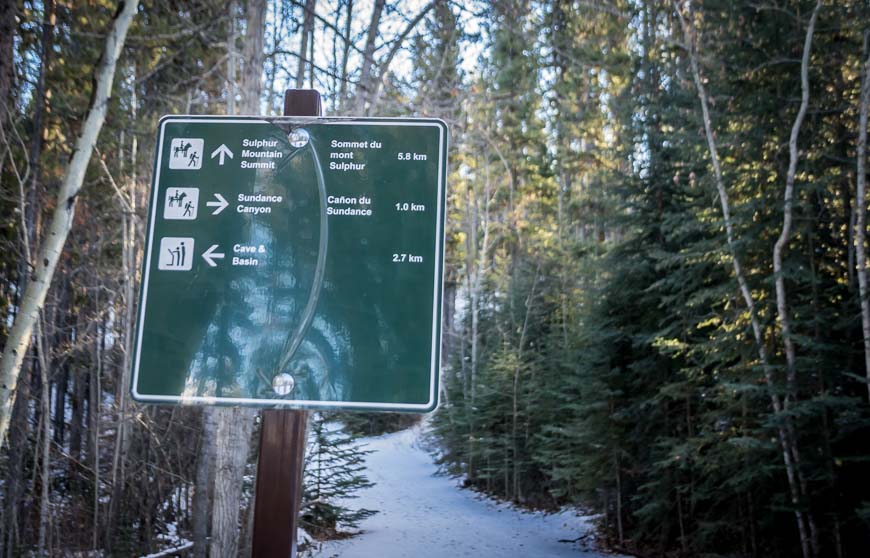
Sanson Peak via the boardwalks
John and I didn’t see a soul on the trail from the minute we left the parking lot until we reached the boardwalk. In summer, the top of Sanson Peak can be packed but it was cold and windy in November so there weren’t that many people that had ventured from the Banff Gondola building.
I highly recommend hiking to the top of the boardwalk to get the view from 2270 m Sanson Peak. It’s also the site of a historic meteorological station called the Sulphur Mountain Cosmic Ray Station National Historic Site. Mountain views up and down the valley from here are fabulous.
If you’re frozen there’s the option of heading to the gondola building to warm up and perhaps even have something to eat. Although you could take the gondola down – for a price – it can be time-consuming to get back to the Cave and Basin parking lot unless you’ve taken two cars and done a shuttle.
Cosmic Ray Road history
There’s an interesting history to the Cosmic Ray Road – which sounds like something out of a sci-fi book. The road was constructed to help with cosmic ray research back in 1956 – one of nine such sites in Canada.
Research was conducted by the University of Alberta in Calgary from 1960 -1978. Signs along the boardwalk describe cosmic rays as “energized particles traveling at close to the speed of light after being accelerated by our sun or exploding stars in distant galaxies.” They are believed to be the cause of the Northern Lights.
The descent on the Sulphur Mountain hike via Cosmic Ray Road
It was a quick descent as the snow was just the right depth for quick stepping down the mountain. In two hours we were back at the car. All told we hiked 16.2 km over five hours – though I’d plan on six hours or more as we were really moving to stay warm.
For a fall or spring outing I don’t think you can beat the Sulphur Mountain hike via Cosmic Ray Road; great views, a good workout and the sense until you reach the boardwalk that you have Banff National Park to yourself. It all adds up to #anotherbestday in the mountains.
Where to stay in Banff
If you want to spend a night or two before or after the hike there are lots of great options.
One of my favourite places to stay is theMoose Hotel– just a short walk away from the Banff strip.Canalta Lodgeis ideal for families and is known for its great price points.
Buffalo Mountain Lodgewith its lovely outdoor hot tub is a short drive out of town.
TheFox Hotel and Suiteswith its cave-inspired hot pool is a favourite of many.
For a boutique motel experience (new in 2022) with simple accommodation, check outThe Dorothy Motel.
More Banff National Park adventures you might enjoy
- 13 Incredible Things to do in Banff in Winter
- A Guide to Banff’s Bow Valley Parkway
- What to Do in Winter in Lake Louise
- The Tunnel Mountain Hike in Banff National Park
- Best Winter Hikes in Banff & Nearby
Click on the photo to bookmark to your Pinterest board.


